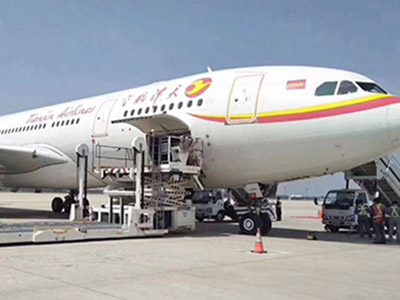domesticair cargoThe rate of charge is determined by multiplying the freight rate per kilogram by the number of "kg" of the goods, but the number of "kg" here refers to the number of kilograms of the charged weight of the goods. According to the understanding of ordinary people, the number of kilograms of the charged weight is not necessarily equal to the number of kilograms of the goods weighed by the scale. Sometimes this kilogram is "measured" with a meter ruler.

The billable weight is calculated by comparing the physical weight of the goods with the "volumetric weight" of the goods. The physical weight is easy to understand, that is, the weight of the goods on the scale, what is the "volume weight" of the goods?
Due to the limited cargo space of the aircraft carrying cargo, in order to balance the relationship between the actual weight of the cargo and the volume occupied by the cargo, the International Air Transport Association (IATA) has uniformly determined the "volume weight" standard formula for domestic air cargo charges.
The volume and weight of air cargo (kg) = cargo volume (length (cm) × width (cm) × height (cm)) / 6000, that is, 6000 cubic centimeters of cargo volume is equivalent to 1 kg of weight to calculate the freight , if converted, the volume of 1 cubic meter of goods should be calculated according to the freight of 167 kg.
According to the principle of taking the maximum weight from the physical weight and the volumetric weight, if the proportion of the goods is small and the unit volume is large, such as cotton and woven handicrafts, the volume of the goods should be measured, the volumetric weight should be calculated according to the above formula, and then the actual weight of the goods and the volumetric weight should be calculated. For comparison, take the largest one as the billable weight, multiply it by the rate per kilogram, and get the freight receivable.
This volume and weight billing method also applies to air express companies. When each international express package passes through the courier company's transit center, it must pass the inspection of systems such as TNT Express' RPP (Revenue Protection Program). After the shipment has been optically scanned, the volume and weight are automatically entered into the courier company's global information system and compared with the actual weight, the volume and weight are billed.
Domestic air freight charges are also related to the type of cargo and the degree of urgency. If you plan to use air freight, be sure to understand these charges.
Monday to Sunday 8:30-21:30
(Welcome to inquire)
connect
